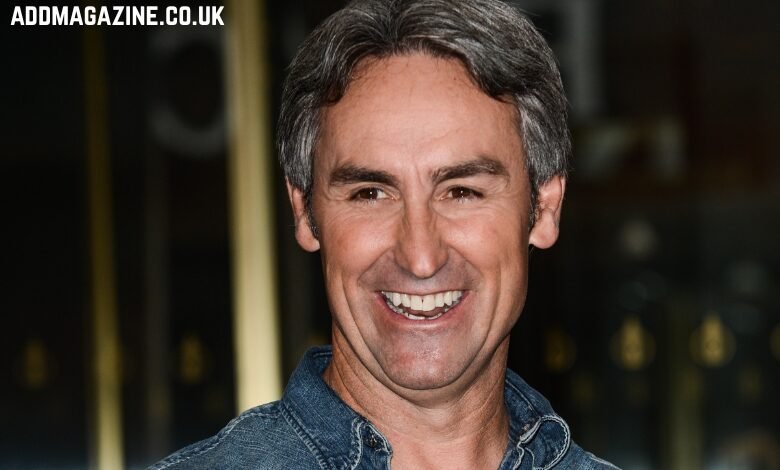Mary Nightingale has long been a familiar and trusted face in British television journalism. With her calm demeanor and professional poise, she has anchored major broadcasts, reported from significant global events, and become a trusted presence on screen. But even the most composed public figures carry private challenges, and Mary Nightingale is no exception.
While many viewers see the polished surface of live television, what happens behind the camera can be an entirely different story. In Mary’s case, she faced a personal health issue that threatened the very tool of her trade: her voice. Her experience sheds light on the often unseen physical and emotional toll of high-pressure broadcast journalism. This is the story of how Mary Nightingale faced, managed, and overcame a deeply personal health struggle with resilience and discretion.
Early Career and Professional Pressures
Mary Nightingale’s career in television journalism spans several decades. Known for her authoritative delivery and ability to handle breaking news with clarity, she has worked in a fast-paced, demanding field for much of her life. As a main anchor, especially during periods of heightened news cycles—such as elections, crises, or pandemics—the pressure is constant.
For presenters, the voice is not just a tool; it’s a lifeline. Hours spent rehearsing scripts, conducting interviews, and delivering live broadcasts can take a significant toll on vocal health. Add to that the mental load of daily deadlines, editorial decisions, and maintaining a composed on-air presence, and the physical consequences of such pressure become understandable.
In Mary’s case, the signs of a deeper issue began subtly.
The Onset of Symptoms
Mary first noticed something wrong when her voice began to falter during rehearsals and live news segments. It wasn’t a dramatic collapse, but rather an unsettling weakness. Sometimes her voice would crack unexpectedly. On other occasions, she found herself struggling to project clearly.
At first, she chalked it up to fatigue or seasonal throat dryness. But the irregularity persisted. The voice issues began to surface more frequently, enough to raise concerns—not just professionally, but medically.
For someone whose daily role relied entirely on vocal delivery, even a slight change could be alarming. While she maintained composure on-screen, behind the scenes, the situation became increasingly distressing.
Private Fears and Silent Anxiety
The uncertainty around her condition brought quiet fear. Without a clear diagnosis, Mary faced multiple possibilities, some serious. One of the most pressing fears was that the problem could be linked to throat cancer—a condition that affects thousands every year and can have life-altering consequences for anyone, especially someone whose livelihood depends on vocal performance.
Though she continued to work, the anxiety lingered in the background. The combination of uncertainty, public visibility, and physical symptoms weighed heavily. She kept the issue private, choosing not to go public until she understood what she was facing.
Mary’s decision to maintain discretion reflected her professionalism—but it also reveals how isolating such experiences can be for people in the public eye. When the world expects perfection, admitting personal struggle becomes more complicated.
Medical Consultations and a Turning Point
Mary eventually consulted with specialists. Tests were run, scopes were used to check for abnormalities in her vocal cords, and several medical explanations were considered. Fortunately, the most serious possibilities were ruled out. There was no cancer. No vocal nodules. No irreversible damage.
What doctors did identify, however, was a combination of vocal strain, stress, and chronic overuse.
This diagnosis wasn’t uncommon among people who use their voices professionally—singers, actors, teachers, and of course, broadcasters. The remedy wasn’t surgical, but behavioral. Mary would need to change the way she worked, spoke, and managed her energy.
The Role of Stress in Physical Health
Mary’s experience is an example of how stress can physically manifest in the body. It’s a reminder that the effects of high-pressure jobs aren’t always mental or emotional—they can impact physical organs too.
For broadcasters, vocal strain is a known occupational hazard. Speaking on air for long periods, often under tight deadlines and in emotionally intense situations, can wear down the vocal cords. Combine that with lack of rest, hydration, and the ever-present mental load of journalism, and the body begins to send signals.
Mary’s symptoms were not just a medical issue; they were a message that her system was overloaded.
Coping With the Diagnosis
Once she understood the problem, the next step was managing it. That meant adopting new habits—many of them challenging for someone in such a visible, time-sensitive job.
She began voice therapy with a specialist. These sessions focused on vocal exercises, breath control, and proper posture. She was advised to take breaks between speaking segments, reduce unnecessary vocal use, and avoid whispering—an action that ironically can be more damaging than speaking aloud.
In addition, she made subtle lifestyle changes: increased hydration, improved sleep routines, and even diet adjustments to avoid reflux that could harm the vocal cords.
Most crucially, Mary had to allow herself rest—real rest. Not just physically, but mentally.
Support From Within the Industry
Behind every recovery story is a support system. For Mary, that came from her colleagues and producers. The management at ITV reportedly respected her need for adjustments. Segment timing was reviewed, workload was balanced, and arrangements were made to prevent burnout.
That support was crucial. Unlike freelancers or contract workers who may fear losing work if they admit a health issue, Mary’s long-standing presence in the newsroom earned her the trust needed to work through recovery without stepping away entirely.
This points to a wider conversation in broadcasting: how to protect presenters from physical strain while still meeting production demands. Mary’s case quietly highlighted this issue without public controversy or grand declarations—just a responsible recalibration.
The Impact of the COVID-19 Pandemic
Mary’s illness and vocal strain also coincided with the COVID-19 pandemic—a time of relentless news cycles, grim updates, and emotional reporting. As one of the main anchors during this period, Mary carried the heavy responsibility of communicating crisis updates to millions.
That environment added emotional exhaustion to physical fatigue. Speaking about the pandemic’s toll, Mary described the reporting process as “relentlessly grim”—a sentiment many journalists echoed. Reporting death tolls, safety warnings, and social consequences of lockdowns on a daily basis created a mental burden that few could escape.
For Mary, anchoring through the pandemic while managing a vocal condition was a balancing act few could understand. But she managed it with strength and realism.
Gradual Recovery and a Return to Strength
Over time, the therapy and rest paid off. Mary’s voice regained its strength, and the reliability she had built over decades of broadcast returned in full. But her experience left a lasting impact—not only in terms of health awareness but in how she approached work-life balance.
She became more protective of her schedule, more attentive to rest, and less likely to push through discomfort. The experience taught her that silence is sometimes necessary for sustainability.
Rather than turn her illness into a headline, Mary let her work speak for itself. Her return to form was not marked by a triumphant announcement but by a quiet continuation of excellence.
Lessons from Mary Nightingale’s Journey
Mary Nightingale’s illness may not have made front-page news, but its significance lies in its commonality. Many people, especially in demanding professions, experience similar health challenges—driven by stress, long hours, and expectations.
Her story offers key lessons:
- Vocal strain is real and preventable – especially in professions that demand constant speaking.
- Stress is physical – and should be addressed with as much urgency as physical injuries.
- Private battles deserve compassion – public figures are human beings too.
- Support systems matter – recovery is rarely possible without organizational flexibility and personal resilience.
- Work doesn’t need to break you – setting limits is not weakness; it’s wisdom.
Conclusion
Mary Nightingale’s experience with illness is not just a health story—it’s a professional one, a human one. It shows how even those we see as unwavering professionals face private moments of fear, doubt, and vulnerability. But with care, support, and persistence, it’s possible to return stronger.
In her quiet, composed way, Mary gave an important message: that strength is not in pretending nothing is wrong, but in facing the struggle with integrity and calm.
And now, when her voice returns to millions of homes each evening, it carries not just the news of the day—but the quiet story of personal resilience.




